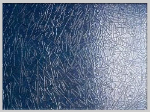
Description of problem:
Cracks show in one of the ground coats.
Causes:
A difference in solubility between paint films due to the aging and hardening of the surface.
A ground coat which has been force-dried at elevated temperatures before polishing and application of the final coat.
Sandwiching a synthetic product such as synthetic primers between 2 coats of nitro-cellulose paint.
Excessive delay before applying the second coat of synthetic paint (the 1st coat has begun to dry).
Using an “incorrect” isolating primer instead of removing the old paint.
Strong solvents in the topcoat attacking a synthetic primer that has been applied very thick with minimal or no flash off times between coats.
Note:
The application of thick wet coats of synthetic paint increases the chances of cracking.
The difference in flexibility between 2 types of finishes whereby the 1st coat is more flexible than the 2nd one usually leads to cracking.
Preventive measures:
Sand the original paint very well before painting (in some cases isolate or remove old paint).
Make sure that the temperature of the surface to be painted is the same as the ambient temperature.
Avoid thick coats.
Never sandwich a synthetic product between 2 NC coats.
Perform solvent test.
Ensure sufficient drying.
Note:
It is wise to make a test on a small surface before painting. If cracking occurs, it is best to apply GenPox isolating primer over the entire surface.
Remedy:
In extreme cases, sand all the way through to the bare metal, clean with Valox and respray.
In minor cases, especially with T.P.A (Thermoplastic Acrylics) you may sand with P1200 and polish.